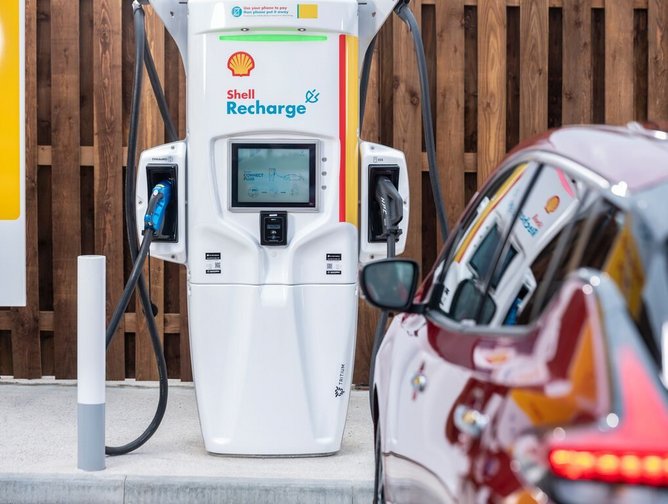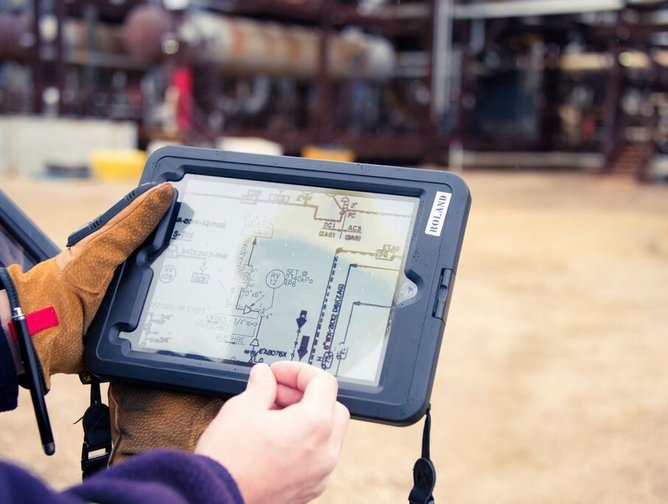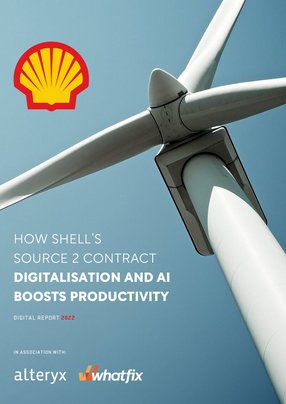How Shell’s S2C digitalisation and AI boosts productivity
Leading a transformation to digitise and automate Shell’s S2C (Source-to-Contract) and E2E (End-to-End) processes, Sander Voorn, the S2C Digital and Process Transformation Design Manager at Shell, discusses how the use of certain digital systems and tools have had a huge and measurable impact on their output.
“My current role is really focused on looking at how we can digitalise,” he says, “and with that, largely automate these processes.”
Voorn has been in procurement for the last 20 years, starting in an internal supply chain management consulting practice and within that role, helping to manage one of the company’s strategic supplier relationships ‒ their technology partner for telecoms. From there, he was integral in centralising their procurement activities, moving into a role to digitalise their contingent workforce spend and activities.
How digital tools fuel Shell’s procurement process
Now at Shell, and describing the interplay of procurement structures and systems that brought this transformation about, Voorn says: “Each business has a procurement function, but they fall under one Executive Vice President, and my organisation supports all of these different businesses centrally. We have a few key tools to carry out this function. We have our Category Management and Contracting Process framework, which lays out the requirements that everybody needs to meet, which we incorporated into the system, SAP Ariba, which has embedded DocuSign. We also have Salesforce to complement this process, and a few other systems which together operate to manage the entire end-to-end (E2E) process.”
With the rise of digital systems in business, and their inevitable impact on global procurement processes, the effects are considerable.
Voorn says: “The biggest changes have been around centralisation, and a growing awareness of the importance and value of data, and the need to structure and standardise that data in order to extract value from it. The risk-management aspect of procurement has fluctuated a little, but in the last couple of years I’ve seen a growing awareness of its importance from a cost perspective, as well as from a differentiator perspective.
“The ability to identify viable organisations ‒ that is, who from a risk and ESG perspective we want to and not want to be doing business with ‒ is becoming increasingly important, and I think this trend will continue to grow.”
Growing digitalisation has unmistakable global consequences, according to Voorn: “We are now able to connect End-To-End (E2E) process that would not have been possible in the past.”
One of the main systems in Shell’s entire S2C process is SAP Ariba, where they now manage all of their spend. Describing the process, he says: “From my perspective, it begins with category management. We have categories like contingent workforce, rotating equipment or consulting, for example. These categories are managed by the Category Managers (CMs) who help collect market intelligence and are responsible for providing global steer to a group of buyers.
“The CMs set up these category strategies that detail how we want to go to market. They typically create global framework agreements, which are then made available through SAP Ariba. The next step begins when our buyers are looking to identify demand for a specific contract. They come up with a sourcing strategy, tie this into the global category strategies and leverage the information from them.”
We can already see how much of Shell’s procurement process is carried out within SAP Ariba.
“We also review and approve them within SAP Ariba,” he says, “which provides the added benefit of being able to reuse and leverage existing or prior strategies, and we then use SAP Ariba to go to market, eSourcing either auctions or tenders.
“We typically provide our suppliers during the tender with our fit-for-purpose contract proposal, in order for them to base their quote on. This draft, too, is created in SAP Ariba, which is done by leveraging the metadata or the header data of the contract, which identify things like country, commodity, dates, contract value and so on to automatically assemble a fit for purpose contract for that unique situation.”
This is where SAP Ariba’s Artificial Intelligence starts to play a greater role.
How Artificial Intelligence and Automation lead to increased productivity
“Contract Authoring was a time consuming and non-compliance risk area until we were able to use SAP Ariba Contract Authoring technology. There are about 50 key data points that the system uses to automatically assemble from around 4000 different elements of clauses, in order to determine the right contract for a specific situation. We have about 6 million possible combinations, and that's the draft that we give to our suppliers to base their bids on. Once we get the quotes back, we finalise the contract agreement, then use DocuSign to get a quick signature on those contracts.”
Once contracts have been signed, they have an automatic bot – referred to as an RPA (Robotic Process Automation) – that then releases the outline agreement of the contract on the SAP ERP system, from which the volume of spending for individual contacts is monitored.
The sheer volume and complexity of data that is sifted through and analysed highlights the extraordinary productivity and efficiency that AI is able to achieve compared to its relative human elements. Shell also employs a selection of other (AI) systems to bolster and complete their operations. One of these is Microsoft Power BI (Business Intelligence), which is used in conjunction with SAP Ariba to allow procurement staff and stakeholders to easily follow contract journeys. A new Suite Dashboard for Shell’s Contract Management Teams (CMTs) is to be implemented into Salesforce, too, where they can see and collaborate on the contract relevant to each party.
Digital contracts, the limitations of AI and the need for human intervention
Voorn’s position is that, even as part of the Shell procurement process – widely recognised as one of the most effective in the world – it is not yet perfect. And this is, he believes, due to the fact much of it still requires a certain amount of human intervention: “Presently, from a workflow perspective, contracts are integrated and to a degree, automated. From an Artificial Intelligence (AI) perspective, however, most of the technology that I see is quite limited, and still needs a lot of human intervention.
“AI, no doubt, is able to perform numerous activities, but in reality for many applications it only has around a 60-70% accuracy rate, which means that you still need to have a person double-checking its work, which kind of defeats the purpose.”
He adds: “Truth be told, when people talk about Machine Learning, it's really about training the algorithm. We train the algorithm what is and what is not permitted, by embedding that training (or that learning) into our regular workflows.”
How AI can help to drive creativity and ethical standards
The AI aspect of Shell’s procurement systems is not only able to improve
cost-effectiveness and operational efficiency, but is also able to free up staff from certain laborious and time-consuming tasks, enabling them to work more creatively, as well as having an impact on ethical procurement.
“If you look at our strategy at Shell ‘Powering Progress’,” says Voorn. “It consists of a number of elements, a key one being ‘Powering Lives’. This means that Shell is concerned with supporting inclusive societies, but it also means making sure that we only ever do business with ethical suppliers, and also that there is supplier-diversity, where we do a lot of supplier development which can take time.
“So, thanks to the AI and automation process, we can free up staff to spend more time finding potentially viable suppliers and to look at how Shell can help these suppliers reduce their own carbon footprint.”
When considering ethical procurement at Shell, the company takes time to develop actions and solutions to diversify their suppliers, as well as how to ensure that workers’ welfare rights and ethical standards are not only complied with, but substantially increased.
Artificial Intelligence also plays a significant role in the quality of Shell’s health and safety standards, with Voorn saying: “As part of our process, we ask suppliers about their safety standards and worker-welfare policies. Some suppliers respond, some don't, or don’t do so quickly enough. In order to tackle this problem, we are building bots to ask these questions and to follow them up.
“Once suppliers come back with their Health and Safety and Welfare Policy documents, they need, of course, to be fully read and digested. We typically know what kind of HSE (Health, Safety and Environmental) policy their documents should cover. With AI NLP (Natural Language processing) capabilities, we can see whether this document and their policy is up to a certain standard and whether it meets our thresholds, so we can then determine where there’s a safety risk for a specific category.
Shell’s Scope 3 ambitions and data driven sustainability
As an energy company, Shell is looking at its own CO2 emissions, as well as Scope 2 and 3 – which includes the CO2 footprint of their suppliers. One of Shell’s policies, implemented last year, surrounds the company’s drive to identify those suppliers who want to actively reduce their CO2 footprint, who can then register themselves in the Supplier Energy Transition Hub (a Shell-initiated programme), which Shell has made available as a public application to which any company can join. In turn, Shell then works with these companies to reduce their carbon footprint.
“This is where you see a touch of symbiosis between our suppliers as customers, and our customers as suppliers; nobody can do this alone, what’s needed is collaboration.”
Shell is currently upgrading one of its SAP Ariba modules, called Supplier Life Cycle and Performance Management (SLP). SLP will allow Shell to develop sophisticated supplier profiles, by being able to analyse the qualifications of a supplier’s performance data from a variety of different angles and lenses. Everything from safety to delivery methods, through to their pricing, quality – and even worker-welfare – will be considered.
Voorn says: “I think that SLP capability is going to be critical in our ‘Powering Lives’ development, and as part of our Net-Zero ambitions."
Electrifying energy: Shell’s strategy to move away from Fossil Fuels
Shell has set out a strategy to accelerate the transition of our business to net-zero emissions. “Shell is working to provide more renewable and low-carbon energy options for customers through investments in wind, solar, electric vehicle charging, hydrogen, and more,” says Voorn. ‘For example, Shell is investing in lower-carbon options – from electric-vehicle charging points and solutions to fuels like hydrogen and biofuels.”
Additionally, Shell recently announced that it plans to increase the number of charging points from 80,000 to 500,000 worldwide by 2025.
“We've been recognised on a number of elements of our portfolio, from CIPS (Chartered Institute of Procurement & Supply) and others. With CIPS, it was for our end-to-end (E2E) process,” says Voorn. “Our source to contact (S2C) digitalisation strategy was recognised due to our global journey, but also due to our position moving forward. We have a fairly high percentage of sourcing that’s done through e-sourcing and e-auctions – when compared to the market standard – with around 88% of our contracts being signed through DocuSign. Just a few years ago, this was very uncommon. We encourage its use at Shell and, once you've used it, you know that it's a better way to go.”
Unexpected Data-Synergies and Value from Artificial Intelligence
For Voorn, the Salesforce programme that Shell uses has two primary functions: it acts as both a kind of dashboard where data from different sources can be directly pulled, as well as having the ability to jump via embedded hyperlinks into SAP Ariba to a specific task or activity.
Salesforce gives them the ability to collaborate, whereas most Source-to-Contract (S2C) tools have limited collaboration capabilities. It also allows them to collaborate on documents and pulls in documents and data from other systems, while also pushing these back into SAP Ariba via a systematic record–keeping function. The entire system is streamlined toward higher productivity.
Voorn says: “A big surprise to me was that data analytics with Alteryx identified activities that were being done that didn’t require doing. We then saw the number of contracts that staff could manage increase and the time it took to complete a contract decrease.
The game changer in process optimisation through process mining was when we decided to use Alteryx. We fed the system all our SAP Ariba workflow data which we analysed to identify frictions points, waste and other inefficiencies. This generated very surprising insights that enabled us to close knowledge gaps with some of our users, take out process steps that were not needed, re-engage with key process participants that were ignoring their tasks in the system and were still using e-mail and implement many more improvements. All combined this led to a 25% shorter cycle time and very material reduction in effort by procurement staff and key stakeholders.
Another programme that Shell uses is Whatfix, which is a digital assistant that’s implemented inside SAP Ariba. Voorn says: “We have about 10 different features that Whatfix can do to help a user who’s, for example, using a feature that's never been used before. Or, if we change something in the system affecting a certain field, they will be notified of this change – and even explain the purpose of that field. Whatfix has enabled us to stop ‘classroom’ training and replaced this with short demos, guided tours, real time tips and similar features. So our users are much more comfortable trying new things because the system will support them. It will also detect in real-time any incongruent data, flag this to the user and guide the user to correct this, avoiding errors further down in the process. This again leads to increased productivity.
The impact of these systems at Shell is palpable. Productivity has been increased and the company is able to react to geopolitical shifts through automation and raising ethical standards while increasing productivity.
Sander Voorn predicts that these trends will continue to grow, serving as a perfect example of the essential nature of digitisation and automation in contributing to the success of any company aiming to thrive in an ever-expanding digital landscape.






